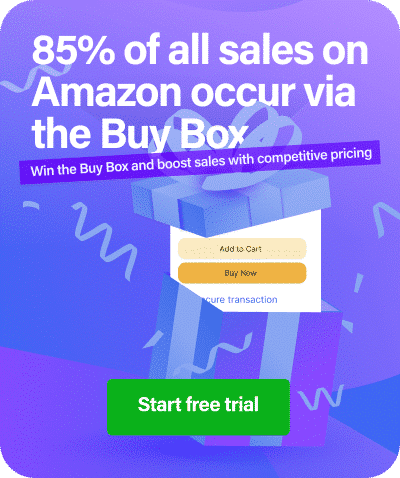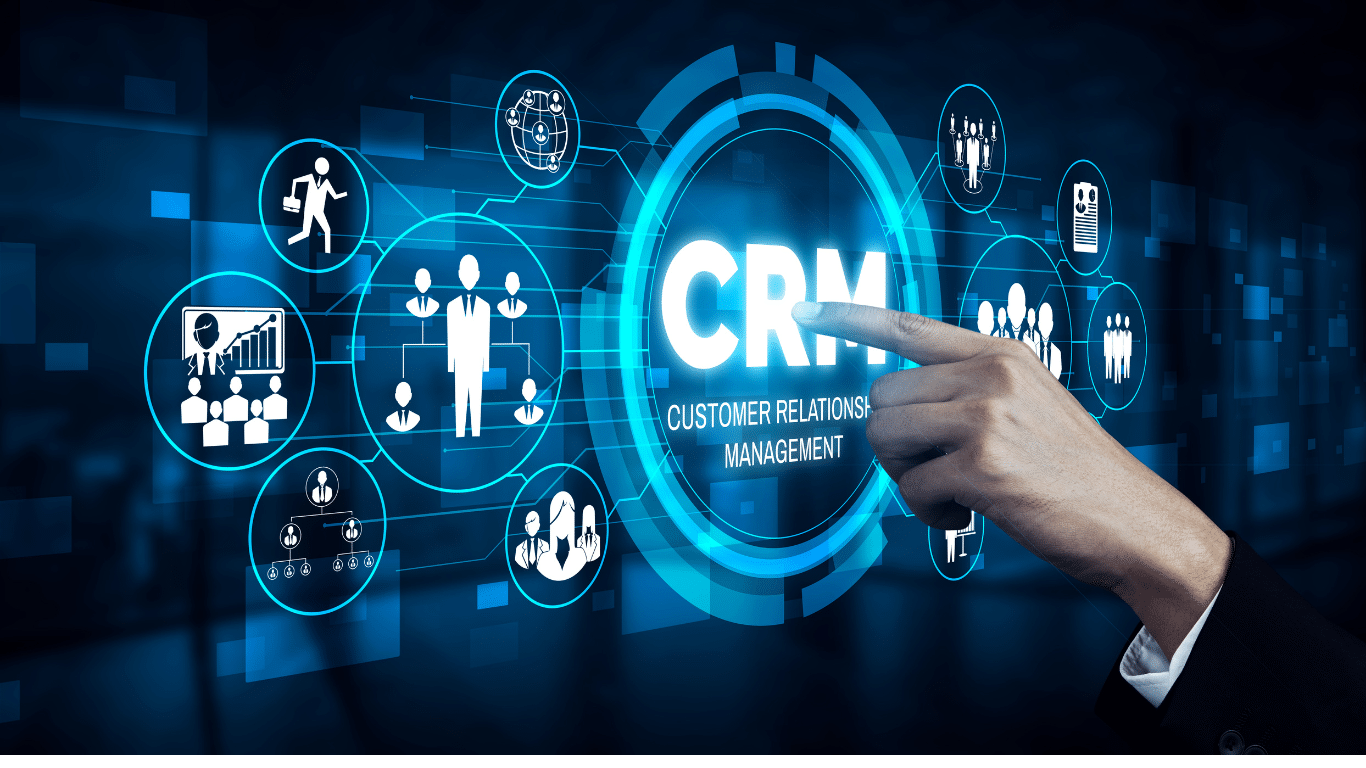Introduction
In the fast-paced world of ecommerce, pricing is no longer a “set it and forget it” game. The difference between winning the Buy Box and losing sales can come down to a single penny—and that gap can change dozens of times per day.
Dynamic repricing is an automated pricing strategy that adjusts your product prices in real-time based on market conditions, competitor behavior, and business rules you define. Unlike static pricing, where you manually set prices and revisit them periodically, dynamic repricing uses software to monitor the market continuously and make price adjustments automatically.
This distinction matters because today’s ecommerce competition moves at machine speed. Amazon alone has millions of sellers competing for visibility, and manual price monitoring simply can’t keep pace. According to recent marketplace data, sellers who implement automated repricing strategies see Buy Box win rates increase by an average of 30-40% within the first 90 days.
The benefits extend beyond just capturing more sales. A well-executed dynamic repricing strategy delivers:
- Increased profitability through intelligent price optimization rather than blind discounting
- More Buy Box wins by responding instantly to competitor price changes
- Significant time savings by eliminating manual price monitoring and updates
- Better inventory velocity by adjusting prices based on stock levels and sell-through rates
This guide will walk you through building a robust repricing strategy from the ground up—covering the technical mechanics, essential tools, implementation steps, and optimization tactics that separate successful automation from margin-destroying race-to-the-bottom pricing.
How Dynamic Repricing Works
Dynamic repricing operates on a continuous feedback loop that monitors market conditions and adjusts prices based on predefined logic. Understanding this system is crucial to implementing it effectively.
The Input Layer
Your repricing engine needs specific data points to make intelligent decisions:
Competitor pricing data: Real-time tracking of other sellers’ prices for the same or similar products. This includes monitoring both the current Buy Box price and the range of competitive offers on the listing.
Buy Box status: Whether you currently hold the Buy Box, who holds it if you don’t, and at what price. Amazon’s Buy Box algorithm considers multiple factors beyond price, including fulfillment method, seller rating, and shipping speed.
Demand signals: Sales velocity, conversion rates, and seasonal trends that indicate how sensitive customers are to price changes on specific products.
Inventory levels: Your current stock position influences pricing strategy. Low-inventory items might warrant higher prices to slow sales and prevent stockouts, while overstocked products benefit from aggressive pricing to improve turnover.
Fulfillment type: Whether you’re using Fulfillment by Amazon (FBA), Fulfillment by Merchant (FBM), or third-party logistics affects your competitive position and cost structure.
The Processing Logic
Once inputs are collected, your repricing rules determine output. This logic can range from simple to sophisticated:
Rule-based logic: “If a competitor undercuts my price, match them minus $0.01, but never go below my minimum price of $X.” These explicit if-then rules are transparent and predictable. For sellers just getting started, understanding repricing basics helps establish the foundation for more advanced strategies.
AI-driven logic: Machine learning algorithms analyze historical data to predict optimal pricing. These systems learn which price points maximize profitability for each product under various market conditions.
Hybrid approaches: Combining rule-based guardrails (like minimum profit margins) with AI optimization within those boundaries offers both safety and sophistication.
The Output Layer
Based on inputs and logic, the system generates automated price changes:
- Prices update in near real-time (typically every 2-15 minutes depending on your tool)
- Changes sync automatically to your marketplace listings
- Logs track every price adjustment for audit and analysis purposes
- Notifications alert you to significant changes or rule violations
Visual concept: Imagine a flowchart where market data feeds into your repricing engine, which evaluates your rules and outputs new prices that automatically update across platforms—all without manual intervention.
Key Elements of a Dynamic Repricing Strategy
Building an effective strategy requires careful configuration of several core components. Think of these as the guardrails and guidance system that keep your automation on track.
Price Floor and Ceiling
Minimum price (floor): This is your absolute bottom—the lowest price at which you’re willing to sell. Calculate this by considering your product cost, marketplace fees, shipping costs, and desired minimum profit margin. Never let automation push you below this threshold, even if competitors do.
Maximum price (ceiling): Your upper limit prevents pricing so high that you lose all competitive viability. This might be based on manufacturer suggested retail price (MSRP), historical maximum selling price, or market research on price sensitivity.
Setting these boundaries SKU-by-SKU rather than using blanket rules is crucial. A high-margin accessory might have a 50% profit floor, while a low-margin commodity product might operate on 8-12% margins.
Pricing Logic Strategies
Different competitive scenarios call for different approaches:
Match lowest competitor: Set your price equal to the lowest competing offer. This maintains competitive parity but doesn’t necessarily win the Buy Box.
Beat by fixed amount: Undercut the competition by a specific dollar amount (e.g., $0.50 below lowest competitor). This is aggressive but can erode margins quickly.
Beat by percentage: Go X% below competitors (e.g., 2% lower). This scales appropriately with higher-priced items and protects margins better than fixed amounts.
Margin-hold strategy: Maintain a target profit margin regardless of competitor movements. If market prices drop below your margin threshold, you exit the race rather than selling at a loss.
Velocity-based pricing: Adjust prices based on how quickly inventory is moving. Fast-selling items can command higher prices, while slow movers get discounted to improve turnover.
Fulfillment-Type Adjustments
FBA sellers typically command Buy Box preference and can price slightly higher than FBM competitors while still winning. Your repricing strategy should account for this advantage—many tools let you price differently against FBA vs. FBM competition.
For example, you might configure rules to:
- Match FBA competitors within $0.10
- Stay $0.50 below FBM competitors to offset the fulfillment advantage
- Ignore international sellers who can’t compete on delivery speed
Advanced Timing Features
Some sophisticated repricers allow time-based rules:
Time-of-day pricing: Raise prices during peak shopping hours when demand is higher and lower them during off-hours to capture more sales volume.
Day-of-week variations: Weekend pricing might differ from weekday pricing based on traffic patterns and conversion rates.
Seasonal adjustments: Automatically increase prices during high-demand seasons (like Q4) or decrease them during slow periods.
These advanced features add complexity, so implement them only after mastering basic dynamic repricing and when data supports their value for your product mix.
Tools That Enable Dynamic Repricing
Dynamic repricing requires software that can monitor markets, execute logic, and update prices automatically. The market offers numerous options, from Amazon’s native tools to specialized third-party platforms.
Amazon’s Built-In Automate Pricing
Amazon Seller Central includes a basic repricing tool at no additional cost. It offers simple rule-based repricing focused on matching or beating the Buy Box or lowest price. While accessible, it lacks sophisticated logic options, multi-channel support, and advanced reporting that professional sellers typically need.
Best for: New sellers testing automation with limited SKU counts who only sell on Amazon.
Third-Party Repricing Software
Professional repricing tools offer significantly more power and flexibility. Here’s an overview of popular options:
Seller Snap: AI-powered repricing with game theory algorithms that predict competitor behavior. Strong analytics dashboard and customizable velocity-based rules. Pricing starts around $30/month for up to 1,000 SKUs.
BQool: Comprehensive repricing with multi-channel support (Amazon, eBay, Walmart). Features include intelligent repricing, business reports, and email integration. Plans start at approximately $25/month.
RepricerExpress: Cloud-based repricing with support for Amazon and eBay. Offers standard rule-based repricing with quick implementation. Pricing begins around $60/month depending on listing volume.
Aura Repricer: Known for its fast repricing speed (every 2 minutes) and advanced rule configuration. Includes split-testing capabilities to optimize repricing strategies. Mid-range pricing for professional sellers.
Feature Comparison Framework
When evaluating tools, consider:
Logic sophistication: Does it offer just rule-based repricing, or does it include AI/ML-powered optimization? Can you layer multiple rules per SKU?
Platform support: Does it work across all marketplaces where you sell (Amazon, Walmart, eBay, Shopify)?
Repricing frequency: How often does it check and update prices? Every 15 minutes is standard; every 2-5 minutes is premium.
Reporting depth: Can you track performance by SKU, category, or custom segments? Does it calculate actual profit including fees?
Integration capabilities: Does it connect with your inventory management system, accounting software, or analytics tools? Check available repricing integrations to ensure compatibility with your existing tech stack.
Support quality: What level of customer service is included? Are there onboarding resources and strategy consultations?
For sellers managing inventory across multiple channels, implementing multichannel repricing eliminates the need to manage separate tools per marketplace and helps maintain consistent pricing strategies across platforms.
Setting It Up: Step-by-Step
Implementing dynamic repricing requires methodical setup to avoid costly mistakes. Follow this proven process to launch your automated pricing strategy successfully.
Step 1: Define Profit Floor and Ceiling Per SKU
Begin with a comprehensive profitability analysis:
Calculate true product cost: Include not just the wholesale or manufacturing cost, but also inbound shipping, prep services, packaging, and any other direct costs.
Factor in all marketplace fees: Account for referral fees (typically 15% on Amazon), FBA fees (variable by size/weight), monthly storage fees, and any additional service fees. Amazon’s FBA calculator can help determine exact fulfillment costs.
Determine minimum acceptable margin: Decide what profit margin makes selling worthwhile. This varies by business model—arbitrage sellers might accept 15-20% ROI, while private label brands might target 40-50%+.
Set your floor price: Cost + fees + minimum margin = absolute minimum price. Build in a small buffer (5-10%) to account for promotional discounts or returns.
Establish ceiling price: Research what the market will bear. Check CamelCamelCamel price history, analyze competitor pricing ranges, and test higher prices before setting maximum thresholds.
Document these parameters in a spreadsheet mapped to your SKUs. This becomes your master pricing strategy document.
Step 2: Select Repricing Logic
Choose your approach based on competitive landscape and business goals:
For highly competitive, commoditized products: Use aggressive “beat lowest by $0.01” logic, but with strict profit floors. You need Buy Box wins to move volume.
For differentiated products with brand value: Use margin-hold or modest competitive matching. Your unique value proposition allows pricing above bare-minimum levels.
For inventory management priorities: Implement velocity-based rules that price up slow movers and price down overstocked items.
For testing optimization: Start with conservative rule-based logic, then upgrade to AI-powered repricing once you understand your baseline performance.
Most sellers benefit from hybrid approaches—different logic for different product categories based on their strategic importance and competitive dynamics.
Step 3: Sync With Inventory and Listing Data
Ensure your repricing tool has accurate, real-time access to:
- Current inventory quantities across all fulfillment locations
- Active listing status and health metrics
- Product costs and fee calculations
- Historical sales data and conversion rates
Most repricers integrate directly with Seller Central via API, pulling this data automatically. Verify the connection is working properly before activating repricing to avoid pricing based on stale information.
Step 4: Test on Limited SKU Set
Never launch repricing across your entire catalog immediately. Instead:
Select 10-30 representative SKUs covering different price points, competition levels, and sales velocities. Choose products where you can afford to learn from mistakes without catastrophic consequences.
Run in monitoring mode first (if available) where the tool recommends price changes but doesn’t execute them. Review suggestions for 3-5 days to verify logic is working as expected. Many professional repricing tools offer safe mode features that let you test without risk.
Activate repricing for test group and monitor intensively for the first week. Check multiple times daily to ensure:
- Prices are updating correctly
- Floor/ceiling limits are respected
- Buy Box win rate is improving or maintaining
- Profit margins are protected
Measure impact: Compare Buy Box percentage, total sales, and profit margins before and after activation. Look for improvements in key metrics.
Step 5: Monitor and Optimize Based on Performance
Once testing validates your strategy, expand gradually while continuing to monitor:
Daily checks (first month):
- Review any SKUs that hit price floors or ceilings
- Check for unusual competitor behavior or price wars
- Monitor Buy Box win rate trends
- Look for repricing errors or system issues
Weekly analysis:
- Evaluate performance by product category
- Identify top and bottom performers
- Adjust rules for underperforming segments
- Test small logic variations on subset of products
Monthly optimization:
- Full profitability review across all repriced products
- Update product costs and fees if they’ve changed
- Refine floor/ceiling prices based on new data
- Consider expanding to additional SKUs
Mini Case Study: 18% Margin Improvement Through Dynamic Pricing
An office supplies seller with 500 SKUs was manually checking prices twice daily and adjusting about 50 SKUs based on obvious competitor changes. This reactive approach meant they were constantly behind market movements.
After implementing dynamic repricing with velocity-based logic, they saw remarkable results within 60 days:
Buy Box wins increased from 62% to 81% by responding to competitor changes within minutes instead of hours.
Average profit margin improved from 22% to 26% (18% relative increase) by automatically raising prices when competitors were out of stock and holding higher prices when product differentiation allowed.
Time savings of 12 hours per week eliminated manual price monitoring, which was reallocated to sourcing and expansion.
The key to their success was starting with conservative rules, testing thoroughly on a small product segment, and gradually optimizing based on actual performance data rather than assumptions.
Avoiding Common Pitfalls
Dynamic repricing automation is powerful, but several traps can undermine your strategy or damage profitability. Here’s how to avoid the most common mistakes.
Going Too Low: Margin-Killing Automation
The biggest risk is configuring overly aggressive repricing that wins the Buy Box but destroys margins. This happens when:
Floor prices are set too low: Some sellers calculate minimum prices incorrectly, forgetting to include all fees or using outdated product costs. Always build in a margin buffer and update cost data regularly.
Logic has no margin protection: Rules that say “beat lowest competitor no matter what” can trigger downward spirals as multiple sellers race to bottom. Always include profit floor constraints that override competitive matching.
Price wars go unmonitored: If you’re in a category with irrational competitors willing to sell at break-even or loss, your automation will follow them down. Set up alerts when prices approach minimums and consider exiting unprofitable races.
Solution: Conduct monthly profitability audits. If any SKU consistently sells at or near your floor price, either the floor is too low, the product isn’t viable, or your repricing logic needs refinement.
Not Setting SKU-Specific Rules
Applying blanket repricing rules across all products ignores important differences in competitive dynamics, margins, and strategic importance.
High-margin vs. low-margin products require different approaches. Your high-margin hero products can sustain more aggressive competitive pricing, while low-margin commodities need strict floor protection.
Fast movers vs. slow movers should price differently. Fast sellers can command slightly higher prices due to proven demand, while aged inventory benefits from discounting.
Private label vs. resale products have different competitive landscapes. Your branded products can price independently, while reselling commodity products requires tighter competitive matching.
Solution: Segment your catalog by product characteristics and business importance. Create repricing strategies for each segment rather than one-size-fits-all rules. Explore advanced repricing features that support catalog segmentation.
Ignoring Non-Price Buy Box Factors
Price is important for Buy Box wins, but it’s not the only factor. Amazon’s algorithm also weighs:
- Fulfillment method: FBA has strong preference over FBM
- Seller performance metrics: Order defect rate, cancellation rate, late shipment rate
- Inventory availability: Adequate stock levels to fulfill expected demand
- Shipping time: Faster delivery options receive preference
- Product condition: New typically wins over Used, even at slightly higher prices
Sellers sometimes obsess over being the lowest price by $0.01 while ignoring that poor metrics or FBM fulfillment are costing them the Buy Box.
Solution: Address non-price factors first. Maintain excellent seller metrics, use FBA when economically viable, keep adequate inventory levels, and ensure accurate listing content. Then optimize price within that strong foundation.
Overcomplicating Logic Without Testing
Some sellers create elaborate multi-layered repricing rules with numerous conditions and exceptions before validating simpler approaches. This creates several problems:
Difficult troubleshooting: When complex rules produce unexpected results, identifying the cause becomes time-consuming.
Rule conflicts: Multiple conditions can contradict each other, causing erratic pricing behavior.
Diminishing returns: Adding your 10th repricing condition rarely improves results as much as optimizing your first three conditions.
Solution: Start simple. Implement basic competitive repricing with floor/ceiling protection. Let it run. Measure results. Only add complexity when data proves it’s needed. According to Shopify’s ecommerce research, 80% of repricing effectiveness comes from 20% of rule sophistication—master the fundamentals before adding advanced features.
Measuring Success
You can’t optimize what you don’t measure. Effective dynamic repricing requires tracking specific KPIs that reveal whether your automation is working.
Core KPIs to Track
Buy Box Win Rate: The percentage of time you hold the Buy Box across all your repriced listings. This is your primary competitive metric. Track overall rate and drill down by product category, price tier, and fulfillment method.
Target: 70-85% for competitive categories with FBA; 50-65% for highly commoditized products; 85%+ for differentiated or private label items.
Profit Per Unit: Average profit earned per sale after all costs and fees. While increasing sales volume matters, it’s meaningless if per-unit profitability declines. Calculate this as: (Sale Price – Product Cost – All Fees) / Units Sold.
Target: Maintain or improve pre-repricing profit margins. A healthy repricing strategy increases sales without sacrificing margin.
Total Revenue Lift: Overall sales increase attributable to repricing. Compare total revenue during equivalent periods before and after implementation, accounting for seasonality.
Target: 20-40% revenue increase within first 90 days for most competitive categories.
Price Change Frequency: How often your repricing tool is updating prices. Too frequent suggests overreaction; too infrequent suggests you’re missing competitive opportunities.
Target: Varies by competition intensity. High-competition products might reprice dozens of times daily; stable categories might reprice a few times per week.
Inventory Turnover Rate: How quickly you’re selling through stock. Effective repricing should improve velocity, especially for aged or overstocked inventory.
Target: 15-30% improvement in turn rate for slow-moving items; maintained or improved velocity for already-fast sellers.
Monitoring Tools
Amazon Seller Central provides basic reporting through the Business Reports section. Track sales, Buy Box percentage, and pricing trends over time. The Pricing Dashboard shows current competitive landscape for your listings.
Repricer Dashboards offer more sophisticated analytics specific to pricing strategy. Most quality repricers include:
- Real-time Buy Box tracking per SKU
- Price change history and logs
- Profit margin calculations incorporating all fees
- Competitive positioning analysis
- A/B testing results for different strategies
Third-party analytics tools like HelloProfit, ManageByStats, or SellerBoard can supplement marketplace and repricer data with deeper profitability analysis and long-term trending.
Monthly Audit Checklist
Dedicate time each month to comprehensive repricing review:
☐ Profitability analysis: Identify any SKUs consistently selling at or near minimum margins. Investigate whether floor prices need adjustment or products should be discontinued.
☐ Rule effectiveness review: Analyze which repricing logic is working best for different product segments. Consider graduating successful test strategies to broader catalog application.
☐ Competitor landscape changes: Note any new competitors or shifts in competitive dynamics that require strategy adjustments.
☐ Cost updates: Verify product costs, shipping fees, and marketplace fees haven’t changed. Update your floor/ceiling calculations accordingly.
☐ Performance outliers: Investigate both top performers (understand what’s working to replicate it) and bottom performers (fix problems or remove non-viable products).
☐ Tool optimization: Check for available updates, new features, or capabilities in your repricing software that could enhance performance.
☐ Strategic alignment: Ensure repricing strategy still aligns with overall business goals. If you’re shifting from volume to margin focus (or vice versa), adjust repricing logic to match.
Conclusion + Action Steps
Dynamic repricing automation represents one of the highest-leverage strategies available to ecommerce sellers. By removing the manual bottleneck of price monitoring and updates, you can compete effectively at scale while protecting profitability and winning more Buy Box opportunities.
The key differentiator between successful and unsuccessful automation is strategic implementation. Sellers who treat repricing as “set it and forget it” often end up in margin-destroying price wars or miss optimization opportunities. Those who approach it as an evolving strategy—with careful configuration, continuous monitoring, and data-driven optimization—consistently outperform manual pricing and careless automation.
Your Action Plan:
- Conduct profitability analysis for your top 50-100 SKUs to establish accurate floor and ceiling prices
- Select a repricing tool that matches your platform mix, catalog size, and budget constraints
- Start with a test group of 10-30 SKUs representing different product types and competitive scenarios
- Monitor intensively for the first 2-4 weeks, making small adjustments based on actual performance
- Expand gradually to broader catalog once you’ve validated your strategy and refined your approach
- Schedule monthly reviews to optimize rules, update costs, and adapt to changing market conditions
The difference between static and dynamic pricing isn’t just about automation—it’s about remaining competitive in markets that move faster than any human can track. Sellers who embrace intelligent automated repricing consistently capture more sales, protect margins better, and free up time to focus on business growth instead of constant price monitoring.
Ready to transform your pricing strategy? Explore Repricer.com to see how professional repricing software can help you implement these strategies across your entire catalog, or book a demo with a repricing expert who can assess your specific competitive situation and recommend an optimal approach.
The market doesn’t wait for manual price updates. Neither should your business.
FAQ
What is dynamic repricing?
Dynamic repricing is an automated pricing strategy that adjusts product prices in real-time based on market conditions, competitor pricing, inventory levels, and predefined business rules. Unlike manual pricing that requires human intervention for each change, dynamic repricing uses software to continuously monitor relevant factors and automatically update prices to optimize for sales velocity, profitability, or Buy Box wins.
Is dynamic pricing the same as price matching?
Not exactly. Price matching is one type of repricing logic, but dynamic repricing is much broader. Price matching specifically means setting your price equal to a competitor’s price. Dynamic repricing encompasses price matching but also includes strategies like beating competitors by specific amounts or percentages, velocity-based pricing that adjusts based on sales speed, margin-hold strategies that maintain profit targets, and AI-powered optimization that learns optimal price points over time. Dynamic repricing gives you flexibility to choose from multiple strategies beyond simple matching.
Will automated repricing hurt my margins?
Automated repricing only hurts margins if configured poorly. The key is setting appropriate minimum price floors that protect profitability and choosing repricing logic that aligns with your business goals. Well-configured repricing actually improves margins by pricing up when possible and only discounting when necessary for competitive positioning. The risk comes from aggressive race-to-bottom logic without proper profit floor protection, or from not monitoring performance and optimizing over time. When implemented strategically, most sellers see margin protection or improvement alongside increased sales volume.
What’s the best tool for dynamic repricing?
The best tool depends on your specific needs and circumstances. For Amazon-only sellers wanting a free basic option, Amazon’s built-in Automate Pricing works for simple scenarios. For professional sellers needing sophisticated logic and analytics, third-party tools like Seller Snap (AI-powered with game theory), BQool (multi-channel support), RepricerExpress (fast implementation), or Aura (rapid repricing speed) offer more capabilities. Consider factors like which marketplaces you sell on, your catalog size, desired repricing frequency, logic sophistication needs, reporting requirements, and budget. Most tools offer free trials, so test 2-3 options with a small SKU set before committing.
Can I use dynamic pricing on Walmart or eBay?
Yes, many repricing tools support multiple marketplaces beyond Amazon. BQool, for example, offers repricing for Amazon, eBay, and Walmart. RepricerExpress supports Amazon and eBay. However, marketplace-specific features vary—tools may have more sophisticated options for Amazon since it’s the largest platform. When evaluating repricers for multi-channel selling, specifically confirm they support all your platforms and ask whether repricing logic can be customized per marketplace, as competitive dynamics differ between Amazon, Walmart, and eBay. Cross-platform repricing helps maintain consistent strategy across your entire ecommerce presence.





